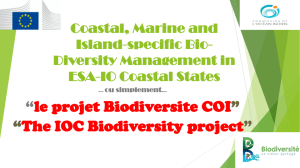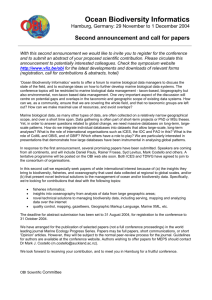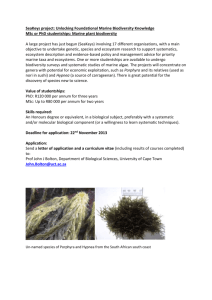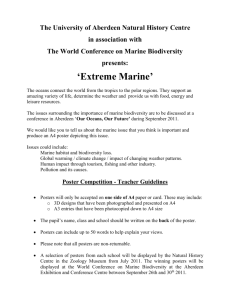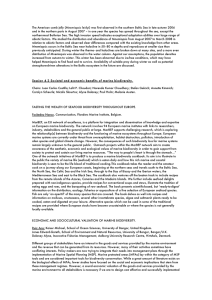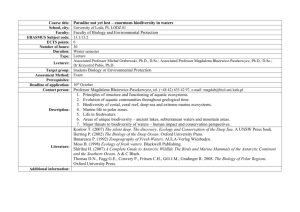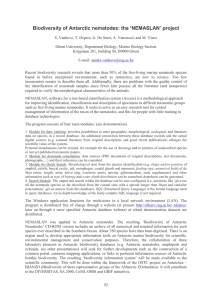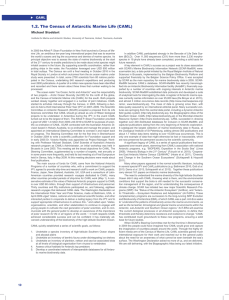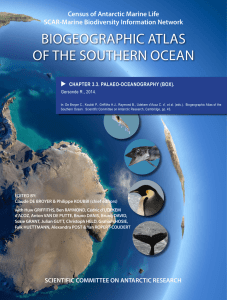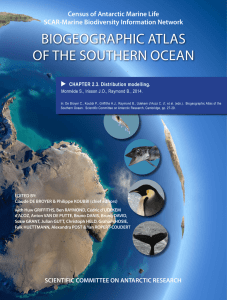13:00 13:15 INVADER, A CASE STUDY ON MNEMIOPSIS LEIDYI
advertisement
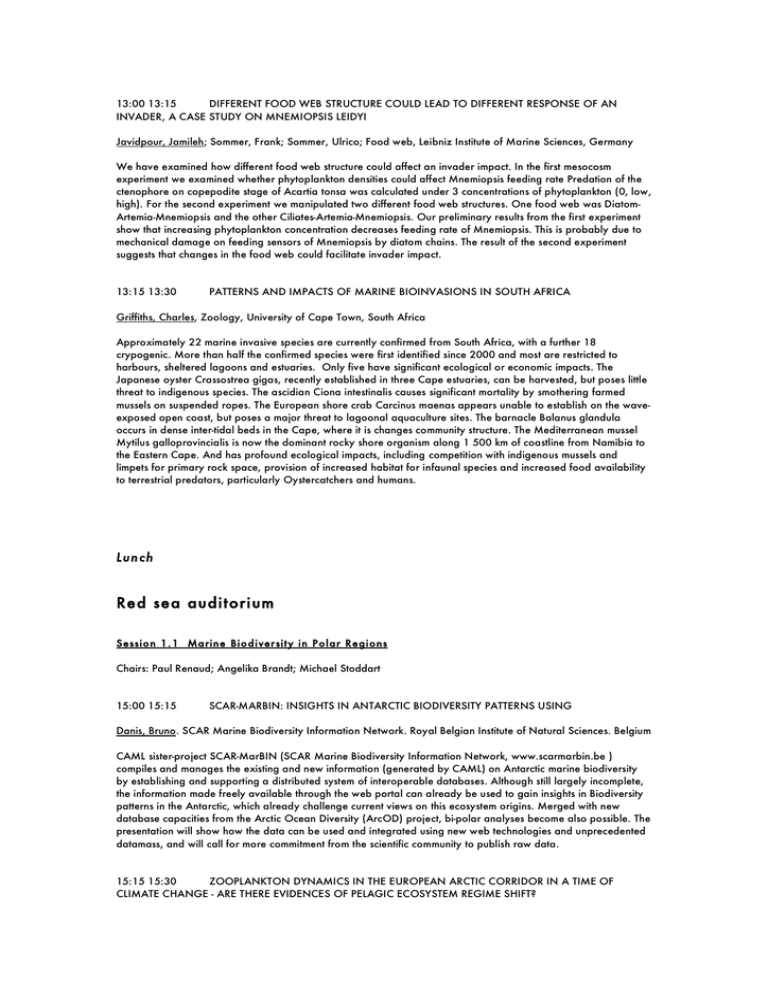
13:00 13:15 DIFFERENT FOOD WEB STRUCTURE COULD LEAD TO DIFFERENT RESPONSE OF AN INVADER, A CASE STUDY ON MNEMIOPSIS LEIDYI Javidpour, Jamileh; Sommer, Frank; Sommer, Ulrico; Food web, Leibniz Institute of Marine Sciences, Germany We have examined how different food web structure could affect an invader impact. In the first mesocosm experiment we examined whether phytoplankton densities could affect Mnemiopsis feeding rate Predation of the ctenophore on copepodite stage of Acartia tonsa was calculated under 3 concentrations of phytoplankton (0, low, high). For the second experiment we manipulated two different food web structures. One food web was DiatomArtemia-Mnemiopsis and the other Ciliates-Artemia-Mnemiopsis. Our preliminary results from the first experiment show that increasing phytoplankton concentration decreases feeding rate of Mnemiopsis. This is probably due to mechanical damage on feeding sensors of Mnemiopsis by diatom chains. The result of the second experiment suggests that changes in the food web could facilitate invader impact. 13:15 13:30 PATTERNS AND IMPACTS OF MARINE BIOINVASIONS IN SOUTH AFRICA Griffiths, Charles, Zoology, University of Cape Town, South Africa Approximately 22 marine invasive species are currently confirmed from South Africa, with a further 18 crypogenic. More than half the confirmed species were first identified since 2000 and most are restricted to harbours, sheltered lagoons and estuaries. Only five have significant ecological or economic impacts. The Japanese oyster Crassostrea gigas, recently established in three Cape estuaries, can be harvested, but poses little threat to indigenous species. The ascidian Ciona intestinalis causes significant mortality by smothering farmed mussels on suspended ropes. The European shore crab Carcinus maenas appears unable to establish on the waveexposed open coast, but poses a major threat to lagoonal aquaculture sites. The barnacle Balanus glandula occurs in dense inter-tidal beds in the Cape, where it is changes community structure. The Mediterranean mussel Mytilus galloprovincialis is now the dominant rocky shore organism along 1 500 km of coastline from Namibia to the Eastern Cape. And has profound ecological impacts, including competition with indigenous mussels and limpets for primary rock space, provision of increased habitat for infaunal species and increased food availability to terrestrial predators, particularly Oystercatchers and humans. Lun ch Red sea auditorium Session 1. 1 Marine Biodiver sity in Polar Regions Chairs: Paul Renaud; Angelika Brandt; Michael Stoddart 15:00 15:15 SCAR-MARBIN: INSIGHTS IN ANTARCTIC BIODIVERSITY PATTERNS USING Danis, Bruno. SCAR Marine Biodiversity Information Network. Royal Belgian Institute of Natural Sciences. Belgium CAML sister-project SCAR-MarBIN (SCAR Marine Biodiversity Information Network, www.scarmarbin.be ) compiles and manages the existing and new information (generated by CAML) on Antarctic marine biodiversity by establishing and supporting a distributed system of interoperable databases. Although still largely incomplete, the information made freely available through the web portal can already be used to gain insights in Biodiversity patterns in the Antarctic, which already challenge current views on this ecosystem origins. Merged with new database capacities from the Arctic Ocean Diversity (ArcOD) project, bi-polar analyses become also possible. The presentation will show how the data can be used and integrated using new web technologies and unprecedented datamass, and will call for more commitment from the scientific community to publish raw data. 15:15 15:30 ZOOPLANKTON DYNAMICS IN THE EUROPEAN ARCTIC CORRIDOR IN A TIME OF CLIMATE CHANGE - ARE THERE EVIDENCES OF PELAGIC ECOSYSTEM REGIME SHIFT?

